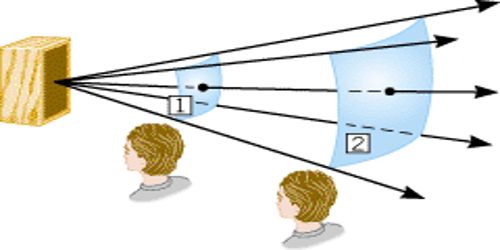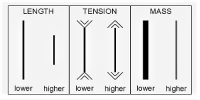Dependence of intensity on different factors:
Intensity of sound depends on the following factors:
Amplitude of vibration of the source: Intensity of sound is proportional to the square of amplitude of vibrations i.e., if the intensity of sound is T and amplitude of vibration of sound is a, then I ∞ a2.
Size of the source: As the size of the source increases, intensity increases accordingly. For example, sound of drum is more intense than the sound of tabla.
Distance from the source: As the distance from the source increases, intensity decreases proportionately. That means, if intensity is I and distance of the listener from the source is r, than I ∞ 1/r2.
Density of the medium: As the density of the medium through which sound propagates is more, intensity of sound becomes more as well. For example, as temperature decreases density of air increases, hence in a winter night sound from long distance can be heard clearly.
Motion of the medium: If someone moves in the direction of motion of the medium, intensity of sound increases and if one goes against the direction of propagation, intensity of sound decreases. For example, if sound proceeds along the direction of flow of air, sound becomes more intense.
Presence of other bodies: If there is a body near a vibrating source of sound, then that body also vibrates with the same frequency. It is called forced vibration. If the area of the body is very large, the intensity of sound due to forces vibrations increases significantly. For this reason there are hollow covers in stringed musical instruments like setar (three-stringed instrument), violin, guitar etc. When played, forced vibrations are produced inside the cover and also in the air inside the cover. So the sound becomes more intense i.e., loud sound is heard.














